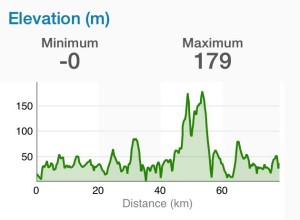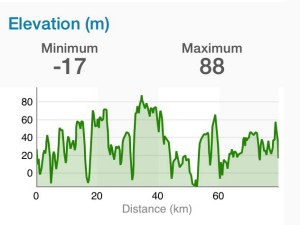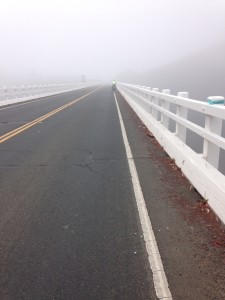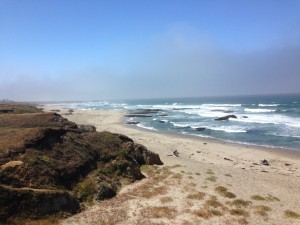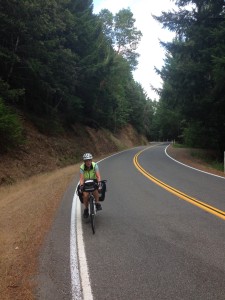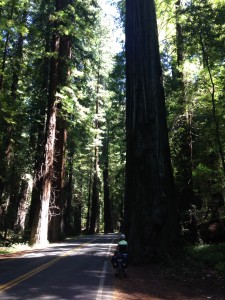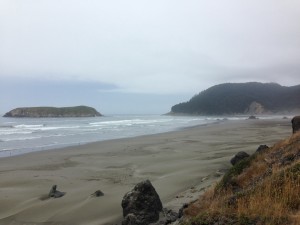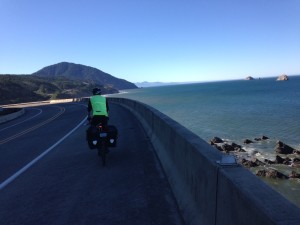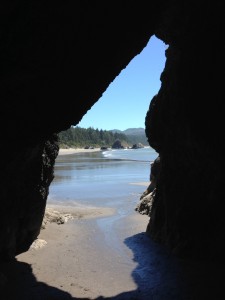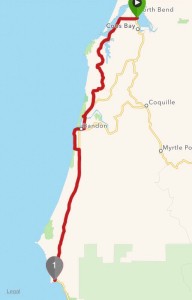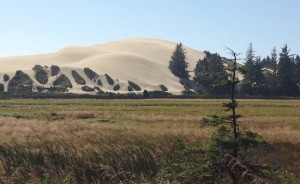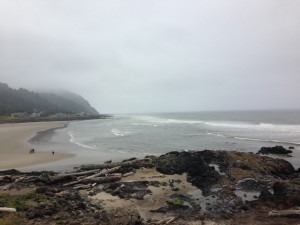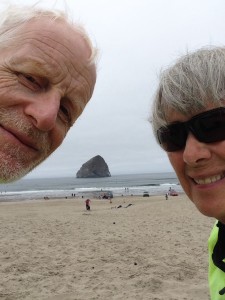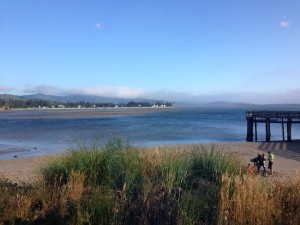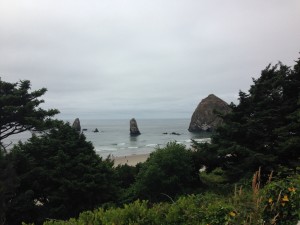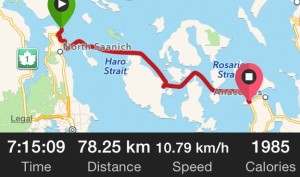Gualala to Bodega Bay (78km)
Our guide book describes today’s section of the route as “demanding”, particularly the “10 strenuous and scenic miles” after Fort Ross where the “highway becomes a bare etching across the steep, unstable cliffs ahead.” Again, it was steep climbs, followed by rapid ascents to sea level via “exhilarating” switchbacks! Nearing the end of the 10-mile stretch, Lois declared that this part of the route was insane and so, probably are the two of us for doing it!
Just beyond Gualala, 16km of shoreline is occupied by Sea Ranch, a community of timber framed houses developed according to tight guidelines. The community does blend into the landscape. When first developed, no access to beach was permitted, but this was fought and, today, there are a series of paths to access the shoreline. Essentially, though, it remains a large private enclave.
In the early 1800’s, an “enterprising” Russian was seeking ways to support and feed workers of the Russian American Fur Company in Sitka Alaska. He was able to develop a settlement at Fort Ross. While growing wheat and making bread to ship north, the Aleuts brought south from Alaska as helpers severly depeleted the local seal and sea otter population through hunting. Altogether, a slightly bizarre story.
No sun again today.
Wildlife notes: White-tailed Kite
We are on the traditional territory of the Coast Miwok People.




